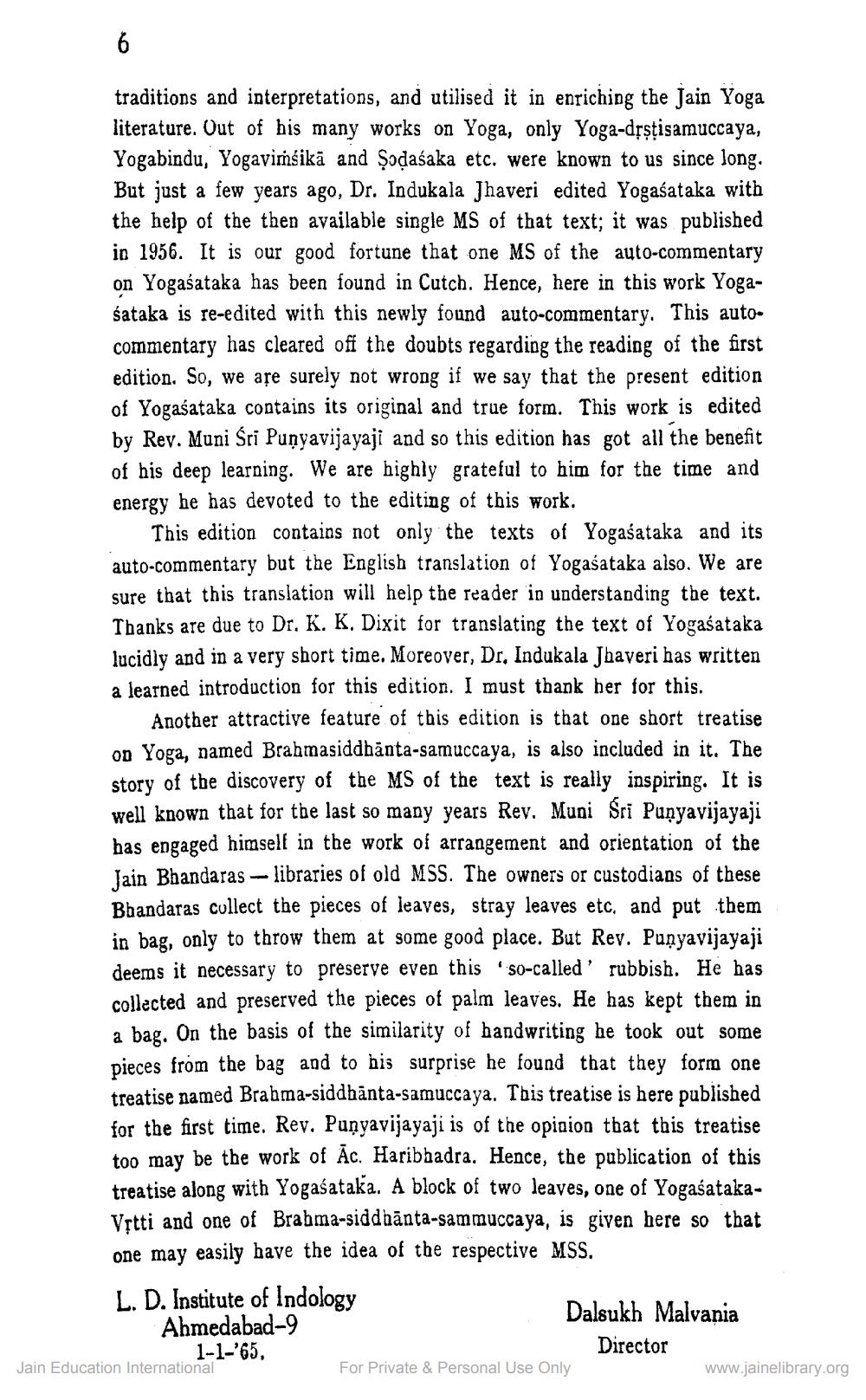________________
traditions and interpretations, and utilised it in enriching the Jain Yoga literature. Out of his many works on Yoga, only Yoga-dřştisamuccaya, Yogabindu, Yogavimśikā and şodaśaka etc. were known to us since long. But just a few years ago, Dr. Indukala Jhaveri edited Yogaśataka with the help of the then available single MS of that text; it was published in 1956. It is our good fortune that one MS of the auto-commentary on Yogaśataka has been found in Cutch. Hence, here in this work Yogaśataka is re-edited with this newly found auto-commentary. This autocommentary has cleared off the doubts regarding the reading of the first edition. So, we are surely not wrong if we say that the present edition of Yogaśataka contains its original and true form. This work is edited by Rev. Muni Śri Punyavijayaji and so this edition has got all the benefit of his deep learning. We are highly grateful to him for the time and energy he has devoted to the editing of this work.
This edition contains not only the texts of Yogaśataka and its auto-commentary but the English translation of Yogaśataka also. We are sure that this translation will help the reader in understanding the text. Thanks are due to Dr. K. K. Dixit for translating the text of Yogaśataka lucidly and in a very short time. Moreover, Dr. Indukala Jhaveri has written a learned introduction for this edition. I must thank her for this.
Another attractive feature of this edition is that one short treatise on Yoga, named Brahmasiddhanta-samuccaya, is also included in it. The story of the discovery of the MS of the text is really inspiring. It is well known that for the last so many years Rev. Muni Sri Punyavijayaji has engaged himself in the work of arrangement and orientation of the Jain Bhandaras -- libraries of old MSS. The owners or custodians of these Bhandaras collect the pieces of leaves, stray leaves etc, and put them in bag, only to throw them at some good place. But Rev. Punyavijayaji deems it necessary to preserve even this so-called 'rubbish. He has collected and preserved the pieces of palm leaves. He has kept them in a bag. On the basis of the similarity of handwriting he took out some pieces from the bag and to his surprise he found that they form one treatise named Brabma-siddhānta-samuccaya. This treatise is here published for the first time. Rev. Punyavijayaji is of the opinion that this treatise too may be the work of Ac. Haribhadra. Hence, the publication of this treatise along with Yogaśataka. A block of two leaves, one of YogaśatakaVrtti and one of Brahma-siddhānta-sammuccaya, is given here so that one may easily have the idea of the respective MSS. L. D. Institute of Indology
Dalsukh Malvania Ahmedabad-9 1-1-'65,
Director Jain Education International For Private & Personal Use Only
www.jainelibrary.org




